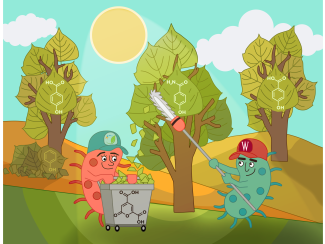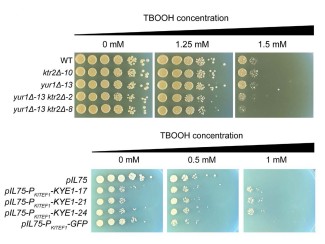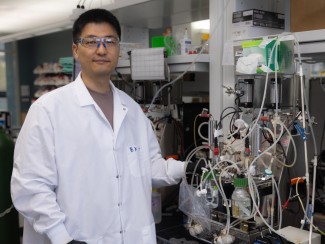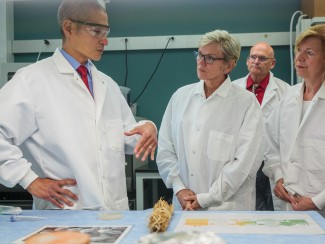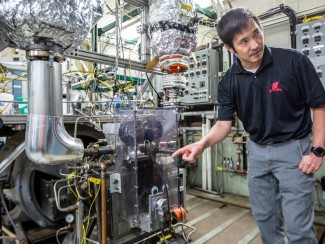
In their lab on a 20-acre prairie in Madison, Wisconsin, Xylome scientists are busy tinkering with the yeasts that live in the bellies of wood-boring beetles. A spin-off from the Great Lakes Bioenergy Research Center (GLBRC), Xylome is lowering the cost of making ethanol by creating new yeast strains that more efficiently convert cellulosic biomass to fuel.
While the early stages of biofuel manufacturing focused on fermenting corn grain to ethanol, corn is not the only available feedstock for making biofuel. Cellulosic biomass – i.e., wood, perennial grasses, and the non-food portion of plants – offers another, arguably more sustainable feedstock for fuels.
And yet developing an economically viable cellulosic biofuel pipeline remains a technically challenging endeavor. Compared to corn, the sugars in cellulosic biomass are much more difficult to access and convert to fuel. The sugar xylose, in particular, which accounts for up to 20 –30% of the dry weight of non-food plants, is notoriously difficult to ferment.
“In order to make ethanol out of cellulosic biomass economically,” says Tom Jeffries, Xylome founder and UW–Madison professor emeritus of microbiology and bacteriology, “the technical problem of how to ferment xylose needed to be solved. It’s a problem I’ve worked on for decades.”
It’s also a problem that got a lift in 2006, when Louisiana State University biologist Meredith Blackwell discovered xylose-fermenting yeasts in the guts of wood-boring beetles. Well-acquainted with Jeffries’ research, Blackwell sent him samples of a particularly interesting yeast species she named Spathaspora passalidarum, and it has been the focus of his work ever since.
“These yeasts inhabit the mid-gut,” says Jeffries, “where they consume the sugars the beetles chew on. They have a huge capacity for degrading not only xylose and other complex sugars, but also cellulose.”
In order to make ethanol out of cellulosic biomass economically, the technical problem of how to ferment xylose needed to be solved. It’s a problem I’ve worked on for decades.
Tom Jeffries
Engineering S. passalidarum to even more effectively ferment xylose and other plant sugars is the work that defines Xylome.
Sequencing the S. passalidarum genome and deepening their understanding of the yeasts’ physiology and biochemistry has allowed Xylome scientists to increase the rate and efficiency of the yeast’s ability to ferment sugars, including xylose, to ethanol.
“We don’t introduce any extraneous genes in this process,” says Jeffries. “We take a native organism with a desirable capability, modify the organism’s genes in useful ways, and put them back into the cell. And it’s working! They’re hardy organisms – it’s not difficult to scale up the process.”
Jeffries emphasizes that Xylome is not focused on establishing new biofuel facilities. Existing ethanol plants, he says, are already built just where they need to be – in the middle of fields, adjacent to railroad tracks, and on rivers.
“Ethanol plants have easy access to feedstocks, transport, and towns that can provide labor. They’ve obtained air and water permits and have community acceptance and support – all very important things!” Jeffries says. “And none of these things has to change when a plant shifts from processing grain to processing cellulosic feedstocks if you have the right fermentation capability.”
Xylome’s first-generation product, a cellulose- and xylose-fermenting yeast strain developed with GLBRC support, will debut at the International Fuel Ethanol Workshop & Expo in June 2016. And Jeffries is confident that Xylome’s product will go a long way in helping grain ethanol producers enter the market for second-generation, cellulosic fuels and chemicals.
GLBRC is one of three Department of Energy Bioenergy Research Centers created to make transformational breakthroughs and build the foundation of new cellulosic biofuels technology. For more information on GLBRC, visit www.glbrc.org or visit us on twitter @glbioenergy.

